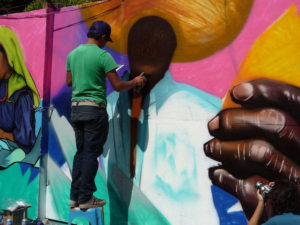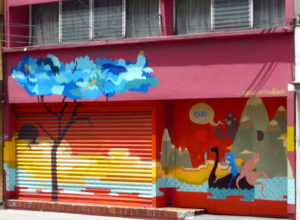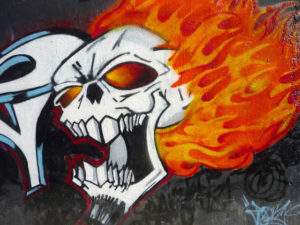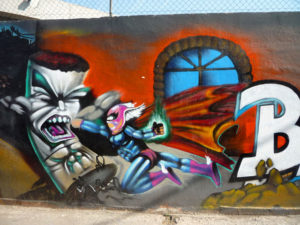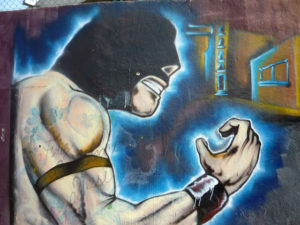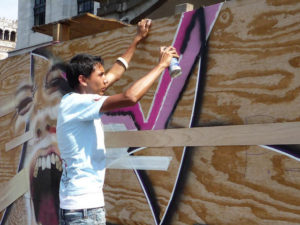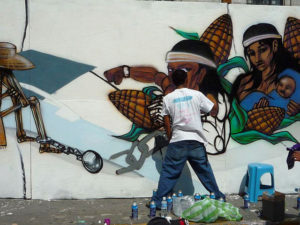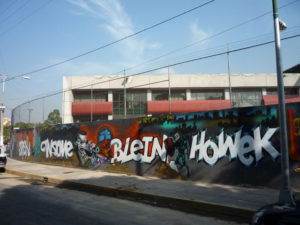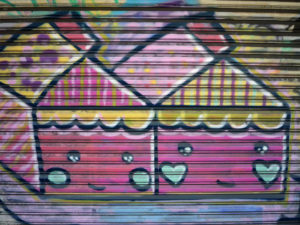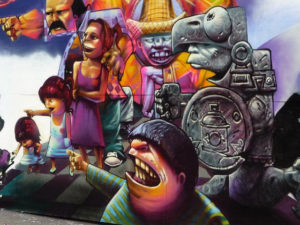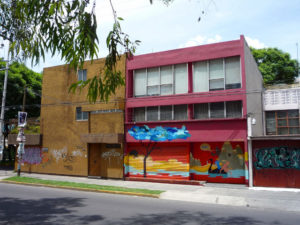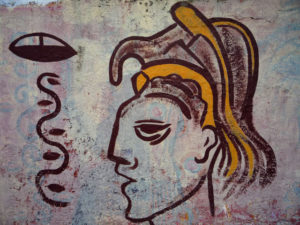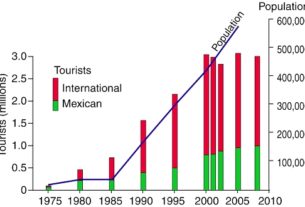In Mexico City, graffiti is a bit like prostitution. Nominally, it’s illegal — carrying a $1,000 peso (100 dollar) fine or a day in jail. But like the hookers plying their trade in mini skirt collectives along infamous thoroughfares such as Sullivan and Tlalpan, the rule of law doesn’t seem to stand in the way of anyone with a can of spray paint inclined to deface a wall.
Most graffiti constitutes a horrible blight on this mad mess of a city: incoherent scrawling (euphemistically referred to “writing”) and tags (some of them gang tags) transform pleasant neighborhood and business districts into tired ghettos of despair and indifference. Not to mention its disturbing proliferation among historic statuary, obelisks and stately colonial homes. I’ve walked through parks where there were tags on plants!
In this city, so many beat cops troll along at a snail’s pace in decrepit squad cars. So it’s extraordinary that hardly one of them seems able to prevent buildings along major, well lit avenues from being disfigured in this fashion. The only conclusion one can draw is that the cops don’t bother to do anything even when they see it happening; like the ladies of the night crying come hither, there’s just no percentage in rounding them up.
Not on their wage.
Yet in the midst of this urban scourge, some quality art is being produced, in most cases anonymously, under the cover of night — as it certainly also is in many other cities of the world. Mexico City’s offerings are well worth documenting. You could probably spend a lifetime doing it.
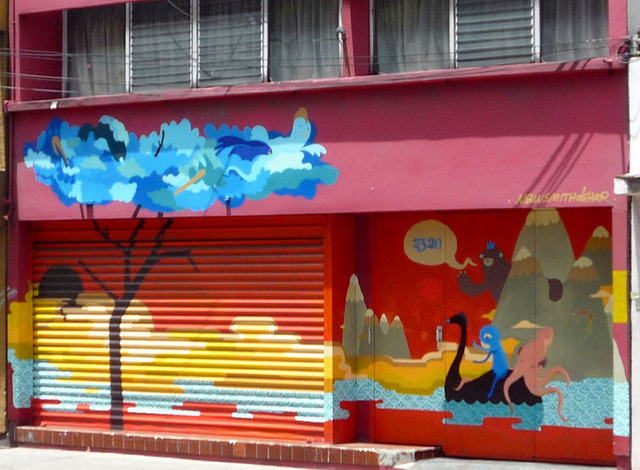
Stencil art is on the rise: underpasses, overpasses and shadowy cul-de-sacs are clarion calls to action. So, too, is the form of legitimate graffiti art – legally sanctioned — in which bona fide graffiti artists professionally convert a wantonly vandalized wall into an aesthetically pleasing mural. Professionally — that is paid to do it. In some cases, they are even commissioned by homeowners who are otherwise frustrated by the endless cycle of graffiti vandalism splayed across the street-facing walls of their private dwellings.
The upside of this latter development is that there seems to have emerged a code one might call “honor among thieves.” But far less talented graffiti vandals won’t deface the work of professional graffiteros.
One popular graffiti art team is the Dearh and Smithe crew, although the idea of a “team” is a loosely held notion since Dhear and Smithe come together occasionally and make it a point to invite anyone else on board to participate in the work. Founder Dearh (whose regular name is Jesus) rejects the notion of a squad out of hand, even though he works with Smithe on a number of projects.
“I’ve never had a crew or team,” he says. “I like to paint with lots of people, with different professions: designers, artists, lawyers, cooks…. It’s not necessary to have an academic background to do graffiti. It is a street discipline.”
“Dhear and I have entered into this empirically,” adds Smithe (also known as Luis Enrique, who otherwise works for a D.F. publicity agency and runs his own clothing line). “We have no [formal art] studies and have developed ourselves over time. I started out for the pleasure and the simple fact of doing it, to see on the streets that someone can capture a feeling.”
The tools of the trade for Dhear, Smithe and other graffiti muralists include spray, valves (for high pressure applications), rollers, vinyl paint, acids and markers. In turn, their own personal feelings as artists, and the urban landscape of an ever-changing 21st century world offer boundless inspiration.
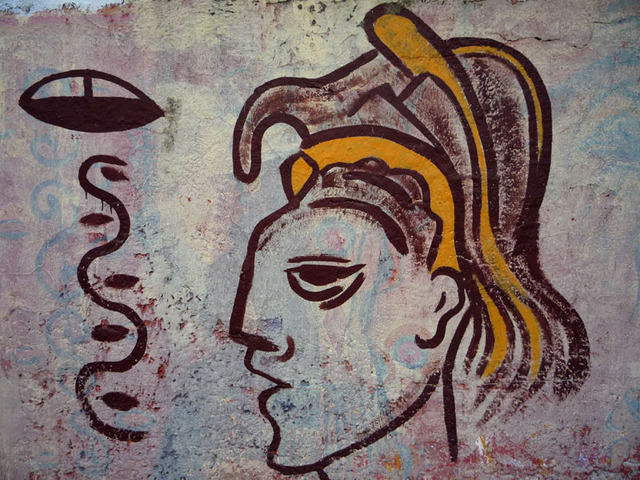
“You cannot limit yourself,” says Dhear. “Nowadays [graffiti] writers are not only inspired by graffiti itself, but by day to day life, comics, design, photography, animation, sport. I think it depends a lot on the [artist] and his surroundings.”
Nonetheless Dhear, who is currently exhibiting his work in the more traditional space of an established local art gallery, has ambition enough to dream of taking his work to the streets of other great cities.
“I never looked at it from a professional point of view,” he says. “First it was a matter of being influenced by local graffiti artists. I was in secondary school. I started out on paper; then I found it on the Internet. I looked for historical data and artists from other countries, and then I grabbed a spray [can]. Now I would like to travel the world painting graffiti [as a professional].”
You can take the tiger out of the jungle, but the jungle of the city now brings out a tiger of a new kind. This is an undeniably loose collective of artists emerging from the shadows of the street — if not yet from a self-appointed, in-your-face anonymity of colorful nom de plumes. In an environment of Facebook, Twitter and a fever for instant celebrity, these graffiti artists exuberantly scorn the obsession with ephemeral fame.
Related articles on MexConnect
- Graffiti: the wry humor of Mexico City street stencil art
- Graffiti: the Estadio Azteca and Mexico City’s new wave muralists

